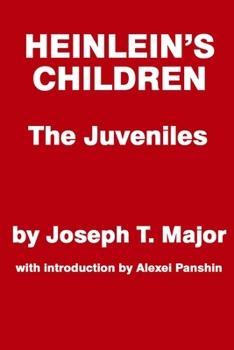Heinlein's Children: The Juveniles
Select Format
Select Condition 
Book Overview
2007 Hugo Award finalist for Best Related Book
with an introduction by Alexei Panshin
Almost half a century ago Robert A. Heinlein began writing a series of juvenile science fiction novels whose influence is still being felt. Many scientists and engineers-in the space program and elsewhere-have said those stories inspired them to commit their lives to research and technology.
The first of those books, Rocket Ship Galileo in 1947, followed the traditional pattern of juvenile fiction in those days: Three teen-age boys and the scientist uncle of one of them set out to design, build, and fly the first spaceship to the Moon. And when they get there, they discover a secret base of Nazi renegade holdouts from World War II.
Heinlein had planned this to be the first in a series about The Young Atomic Engineers. But that fell through, and starting with the second in the series, Space Cadet in 1948, the Heinlein juveniles were independent stories not connected to each other. And they do not fit into his famous "Future History."
Perhaps the most notable characteristic of the Heinlein juveniles is that they are juvenile only in that the protagonists are youngsters, usually in their late teens. (Of course, in keeping with publishers' requirements of that time, sexual matters are either absent or very discreetly veiled.) But the stories are not in any way "written down" to their young readers and can be fully enjoyed by adults. That may explain why they have worn so well-those who loved them as children find that they are just as good when reread thirty or forty years later. That's also why they have stayed in print most of these years.
Mr. Major's study of Heinlein's juveniles emphasizes plot development and incident, considers what Heinlein was trying to do in each story and how well he succeeded, and also points out possible influences from other sources.
Major does not waste the reader's time trying to "deconstruct" stories to make political points about our own times. The closest he comes to that is in considering the controversy that exploded around Starship Troopers (1959) and why the book was denounced as militaristic and fascist by some critics (many of whom understood little about the military and even less about fascism). Scribner's published the first twelve of Heinlein's juveniles, but balked at Starship Troopers-too much red meat for young readers, apparently-so Heinlein sold the last two of his juveniles to Putnam's.
This book is introduced by Alexei Panshin, whose own Advent books Heinlein in Dimension and SF in Dimension reflect a quite different way of analyzing the works of Robert A. Heinlein.





